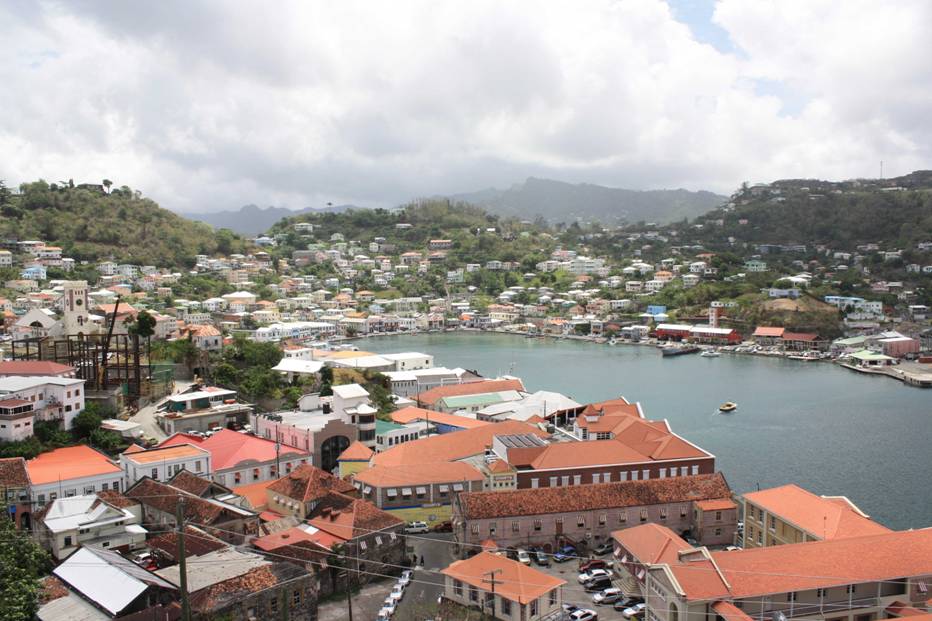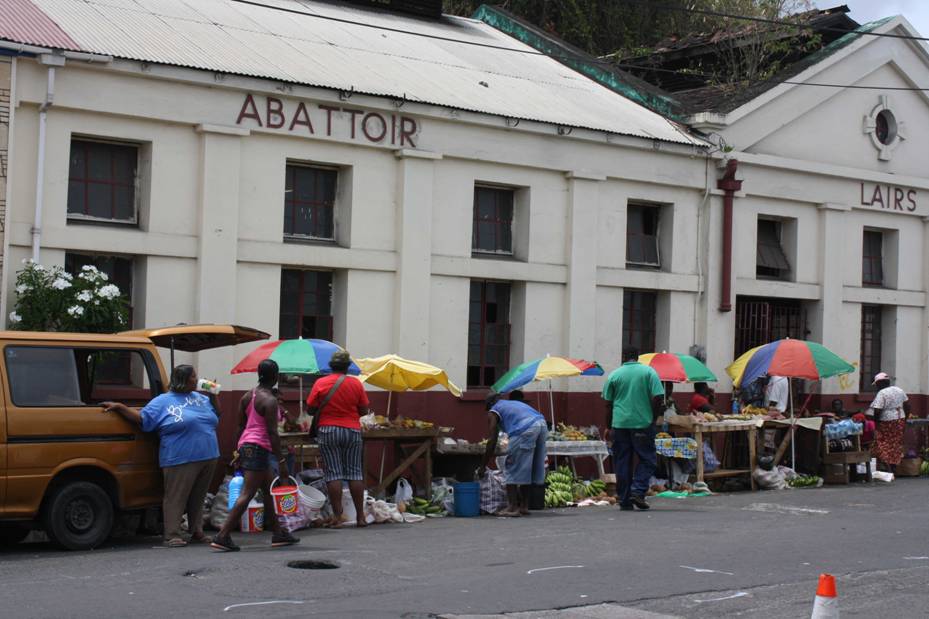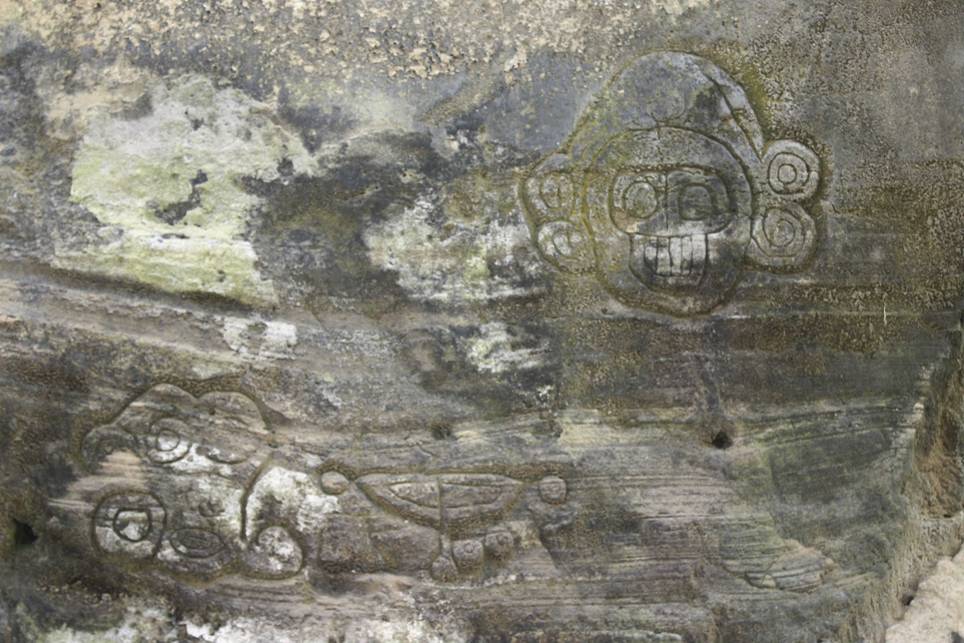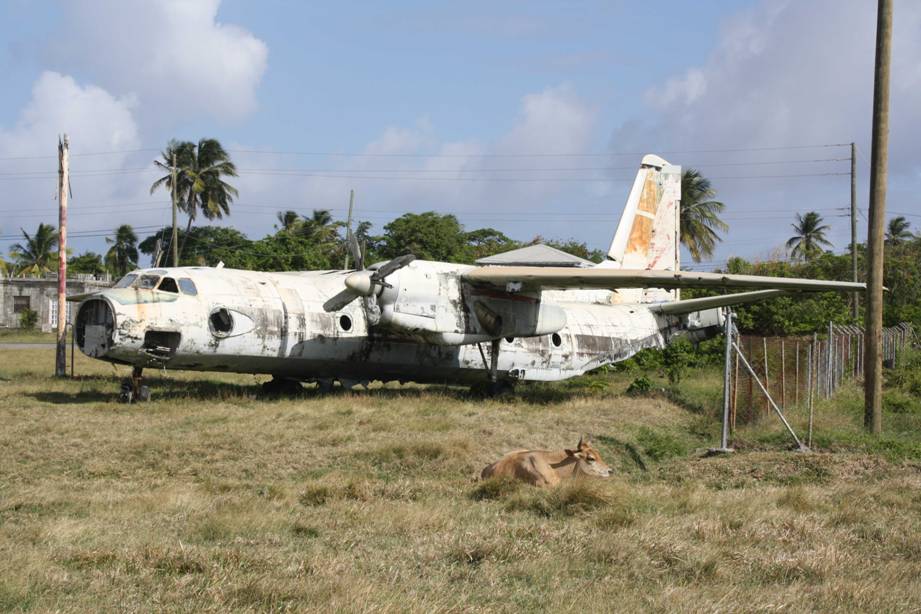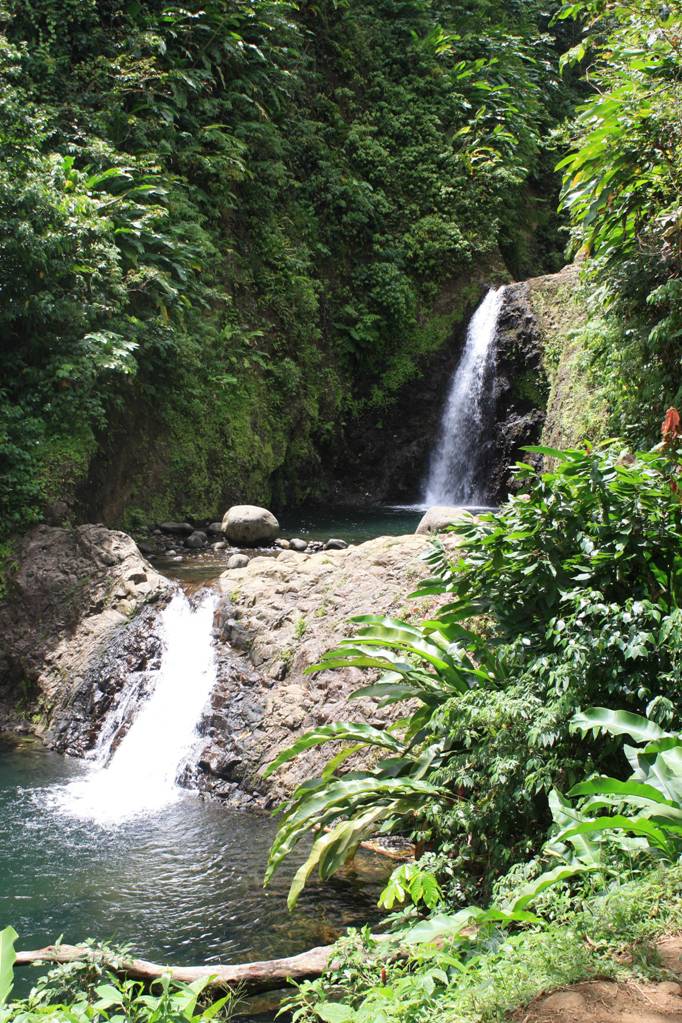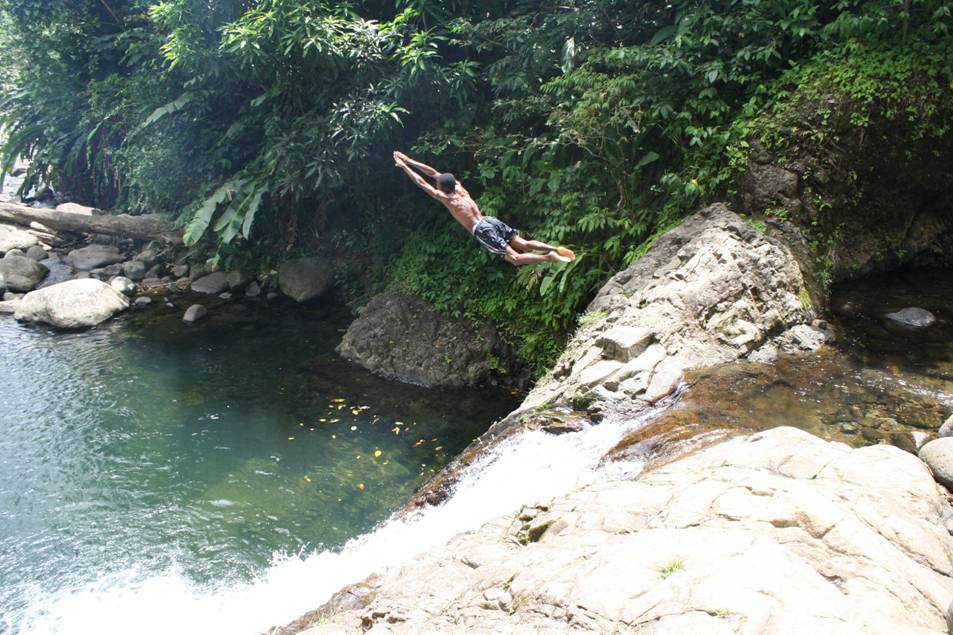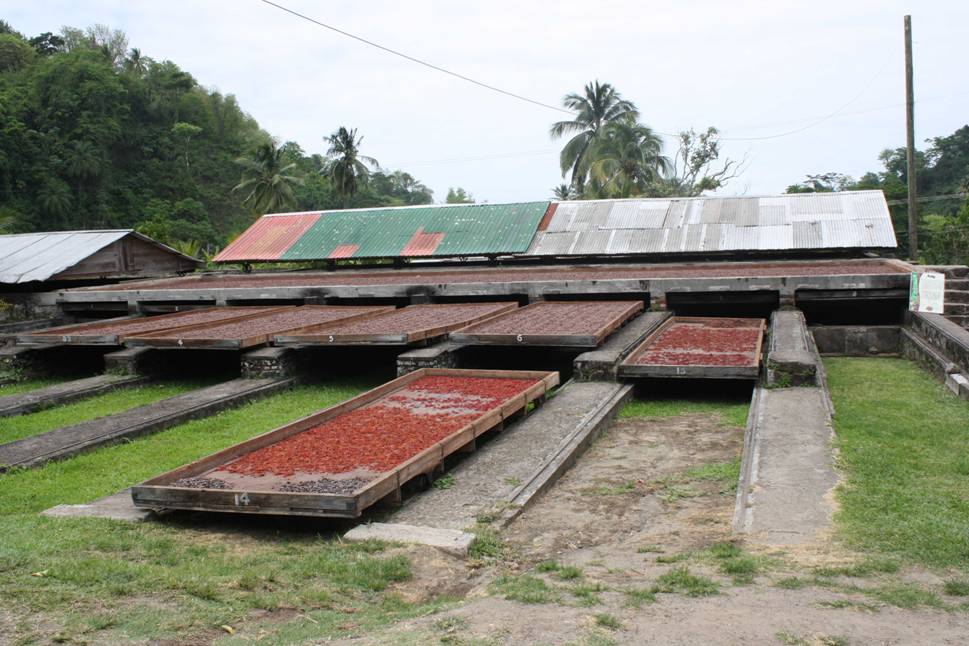The Spice Isle

|
Katie's Caribbean
Tour Having arrived in Grenada over two weeks ago, we have
made good headway into preparing Curious for the next leg of the journey to
South America (lots of cleaning, polishing, re-cleaning and re-polishing) but it
has also been a great opportunity to explore this fantastic island. The new marina we are staying in - Port Louis – is
excellent and only a short dinghy or 'dollar bus' ride (or slightly longer
walk) from the island's capital, St George's – a bustling and vibrant
market town. The Carenage, St George's
The market, St George's
The markets, especially on Saturdays, are full of fruit
& vegetable and spice stalls and the vendors are always keen to share their
breadfruit or plantain recipes with you. The fish market is always full with
the catches of the day including snapper, red hind, jacks and, of course, tuna.
Lots of tuna. Lots of big tuna! We hired a jeep over the weekend and made our way through
the narrow, winding roads (watching out for the kamikaze buses coming towards
us doing about 100mph). The island is very mountainous and every square inch is
covered in vegetation, which hides the extremely steep slopes at the side of
the road – probably for the best. Over a few days, we discovered jungles,
waterfalls, plantations, beautifully unspoilt beaches and insightful Caribbean
history. On the first day, we made our way up to the north of the
island to Sauteurs or 'Carib's Leap', which overlooks the Atlantic sea and the
outer lying islands and Carriacou to the north. It is said that the Carib
Indians preferred to throw themselves off the famous cliff rather than relent
to French control of the island. Arawak Engravings
The Caribbean islands have a mixed and very colourful
history; from the Arawak and Carib Indians, the first inhabitants of the
islands, via the battles of the French, British, Dutch and Spanish during the
peak of the countries' empire building in the 17th and 18th centuries, to more
recent political activity. We have seen much evidence of the naval history
(Columbus, Napoleon et al.) throughout the islands, illustrated by the many
forts and strongholds situated at strategic vantage points, but our research
and exploration of Grenada tempted us to one site, proof of a more modern history:
Pearl's Airport. Although the location was originally an Indian settlement and
burial ground, the site was used as a base by the Cuban and Russian air force
during the Cold War. A couple of weather-beaten aircraft relics just off the
run-way lend a note to the eerie atmosphere of the place, as if time had
stopped when the airport was abandoned in 1984. The opening hours of the café
are still posted in the window. Pearl's Airport
In the island's interior, St Margaret's Waterfall is
situated on the Seven Sisters plantation so you need a guide to take you, as
the path passes over the private land. Our guide, Clifdon, was an enthusiastic
and sprightly mountain goat, who described his experiences of Hurricane Ivan in
2004 as we worked our way down the steep jungle path that leads to the falls
(the village where he lived had all gathered in the safest place: the village
hall, only to discover later that the roof would not survive the hurricane...).
Seven Sisters Waterfall
As we arrived at the beautiful 'double' falls (only two
of the river's six waterfalls) Clifdon promptly took off his Croks, ran up an
impossibly steep and sheer rock and proceeded to do a back flip from the top
into the plunge pool beneath. This was followed closely by a magnificent dive
into the lower falls. The Flying Leap, Seven Sisters Waterfall
Our next road trip took us to the Belmont Estate in the
north east of the island; a 360 year old plantation. Passing from British to
Scottish control and used to grow firstly coffee beans and then nutmeg (where
we also get mace from), the plantation was then bought by an Indian family and
their descendants still own and use the land to grow everything from bananas to
orchids. However, their main exploitation is cocoa beans... and where there's
cocoa, there's chocolate! The 'Criolo' beans (the rarest type of cocoa) is the only
kind grown on Grenada. Although the trees produce cocoa pods all year round,
the main harvest season is between November and April. Every Wednesday, farmers
gather at the Belmont Estate (in their hundreds) to sell the 'wet' beans they
have grown and harvested. The beans are covered in a sticky and sweet coating,
almost of lychee-consistency, and are then drained and weighed. The farmers are
paid around EC$1.40 (about 35p) per pound of beans, depending on the season,
which doesn't sound much but the estate can buy anything up to 59,000 lbs of
beans every week. The beans are then put into boxes - what look like
horses' stables – and then covered in banana leaves and sacking to trap
the heat and begin the fermentation process. This lasts eight days and during
this time they produce a huge amount of heat. The beans are then dried in the
sun for seven days to become... 'dry' beans! Drying cocoa beans
The shelling, grinding and secret chocolate making
process is carried out at The Grenada Chocolate Company factory a few miles
down the road. Cocoa butter (taken from the cocoa pod) is added to enhance the
rich flavour and to act as a natural preservative, then just a tiny amount of
sugar and a little milk, depending on the content of cocoa required. Only about
10% of the beans are kept on the island and used to produce Grenadian
Chocolate. The rest are polished (to make them look nice and shiny for
potential buyers – even though the outer shell is removed before
extracting the cocoa inside!) and exported all over the world but primarily to
Switzerland, Belgium and France. There is just left to say that, yes, we were lucky enough
to be given a tasting of both the 60% and 71% chocolate and it was... Mmmmmm!
|
